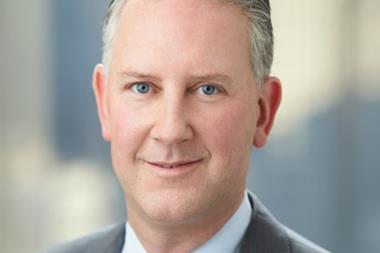We keep hearing that the hard market is coming. But, in the first of a quarterly series, research from software house Acturis reveals the situation is a little more difficult to predict
When will the market harden? As the UK officially enters recession, insurance bosses have been rubbing their hands at the prospect of rising rates and muttering those magic words, “counter-cyclical”.
But according to research by leading software house Acturis, supplied exclusively to Insurance Times, rates in the main lines of business stayed flat or fell during 2008.
There are some signs that a recovery may be starting, but a great deal will need to be done to ensure that this continues through 2009. Chief executives who are talking up rates will have to make sure their underwriters around the country are following through.
Theo Duchen, co-chief executive at Acturis, says: “While the general consensus in the market is that average premiums will increase this year, from our perspective the evidence on this remains mixed at this point.
“Although average premiums increased in some key classes in the fourth quarter of 2008, it is by no means certain that this will continue and, from the data, there is perhaps a seasonal average premium increase in the fourth quarter that may distort things.
“The first quarter of 2009 will be a critical period. On the evidence we have to date, we are perhaps more sceptical about an overall increase, unless we see more evidence of continued increases in key classes in the first quarter.”
A leading analyst says the Acturis figures show that rates fell even further than expected last year – but adds that any increases from the January reinsurance renewals will only start to filter through now.
“We would have thought rates were relatively stable throughout 2008,” says the analyst.
“It’s from now on that we expect them to harden. Rate rises are going through now, and will do more so after the next round of renewals in March.”
As the information below shows, a hard market is still far from a certainty.
[SEE ATTACHED PDF FOR CHARTS]
Packages
Packages include all popular small and medium-sized enterprise and micro packages (for example, tradesman, shops and offices) and total about 10% of a broker’s portfolio. Average premiums in 2008 were down 5% on 2007 levels, although renewal premiums increased 3%. While new business average premiums fell in all quarters, renewal average premiums increased in the second, third and fourth quarters. The quarter-on-quarter indexed average premium movements suggested a potential reversal.
Commercial combined
Commercial combined premiums, which make up 20%-25% of a typical broker portfolio, fell by about 4% through 2008. This trend worsened over the year, especially for new business, and combined average premiums may reduce further in early 2009. The beginnings of a recovery may have appeared in the final quarter of last year, however. From the third quarter to the fourth, average premiums rose by 4%. This was reflected in renewals (up 6%) and new business ( up 1%).
Property owners
Average premiums have fallen 6% from 2007 levels, with new business premiums falling about 16% and renewal premiums rising about 7% to offset the overall reduction. Reductions in new business average premiums were severe throughout the year, but renewal average premiums increased in all quarters. Similar to other products, average premiums began to rise in the final quarter. Even the new business index turned upwards in the last three months of 2008.
Motor fleet
Motor fleet business represents about 20% of a typical broker portfolio. Average premiums have been more stable than in the other classes. Last year, new business premiums were just 1% up on 2007 levels and renewal premiums were down 2%. Looking at quarter-on-quarter movements, the gap between average premiums for renewals and new business became negligible. Perhaps participants are now prepared to sacrifice volume for profitability in this class and are pushing through wholesale rate increases?
Downloads
Commercial rating indices
PDF, Size 0.26 mb
Postscript
How the figures were calculated
All renewal and new business trades on Acturis System in a particular class for 2007 and 2008 with extreme values removed: combined – £500-£65,000 premiums; packages – £50-£4,000 premiums; property owners – £125-£60,000 premiums; fleet – £500-£60,000 premiums. Property owners include commercial, residential and mixed business.
Hosted by comedian and actor Tom Allen, 34 Gold, 23 Silver and 22 Bronze awards were handed out across an amazing 34 categories recognising brilliance and innovation right across the breadth of UK general insurance.












































No comments yet